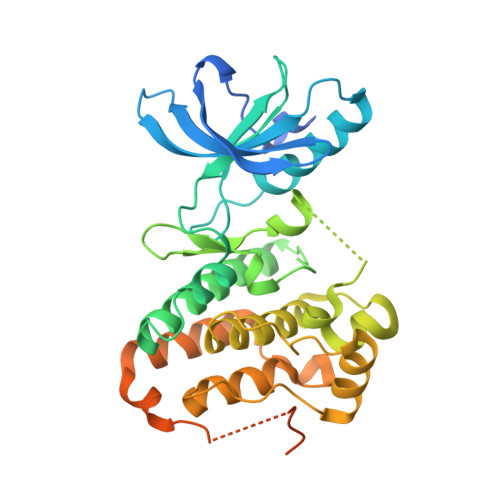Structural Analysis of the Binding of Type I, I1/2, and II Inhibitors to Eph Tyrosine Kinases.
Dong, J., Zhao, H., Zhou, T., Spiliotopoulos, D., Rajendran, C., Li, X.D., Huang, D., Caflisch, A.(2015) ACS Med Chem Lett 6: 79-83
- PubMed: 25589935
- DOI: https://doi.org/10.1021/ml500355x
- Primary Citation of Related Structures:
4TWN, 4TWO - PubMed Abstract:
We have solved the crystal structures of the EphA3 tyrosine kinase in complex with nine small-molecule inhibitors, which represent five different chemotypes and three main binding modes, i.e., types I and I1/2 (DFG in) and type II (DFG out). The three structures with type I1/2 inhibitors show that the higher affinity with respect to type I is due to an additional polar group (hydroxyl or pyrazole ring of indazole) which is fully buried and is involved in the same hydrogen bonds as the (urea or amide) linker of the type II inhibitors. Overall, the type I and type II binding modes belong to the lock-and-key and induced fit mechanism, respectively. In the type II binding, the scaffold in contact with the hinge region influences the position of the Phe765 side chain of the DFG motif and the orientation of the Gly-rich loop. The binding mode of Birb796 in the EphA3 kinase does not involve any hydrogen bond with the hinge region, which is different from the Birb796/p38 MAP kinase complex. Our structural analysis emphasizes the importance of accounting for structural plasticity of the ATP binding site in the design of type II inhibitors of tyrosine kinases.
Organizational Affiliation:
Department of Biochemistry, University of Zurich , Winterthurerstrasse 190, CH-8057 Zurich, Switzerland.














